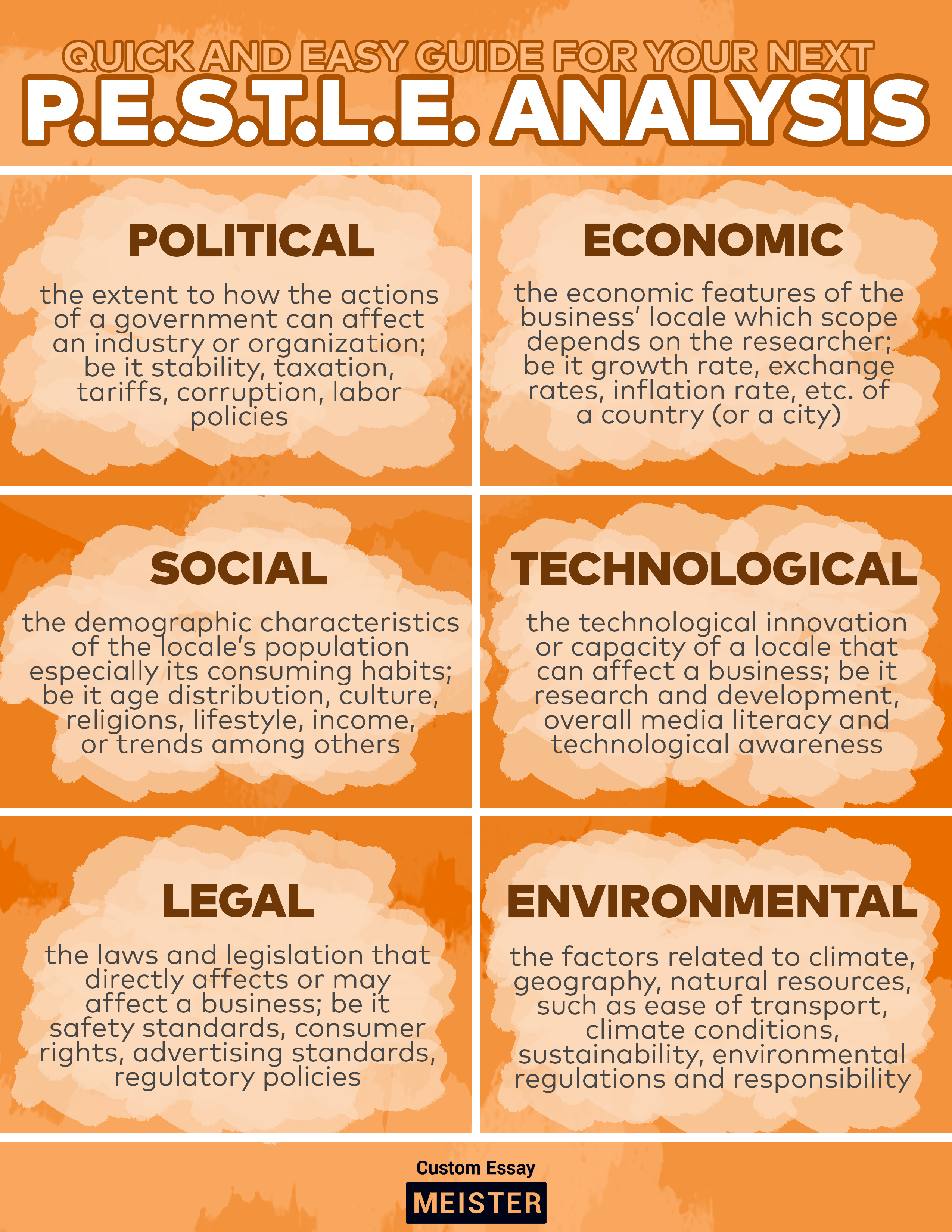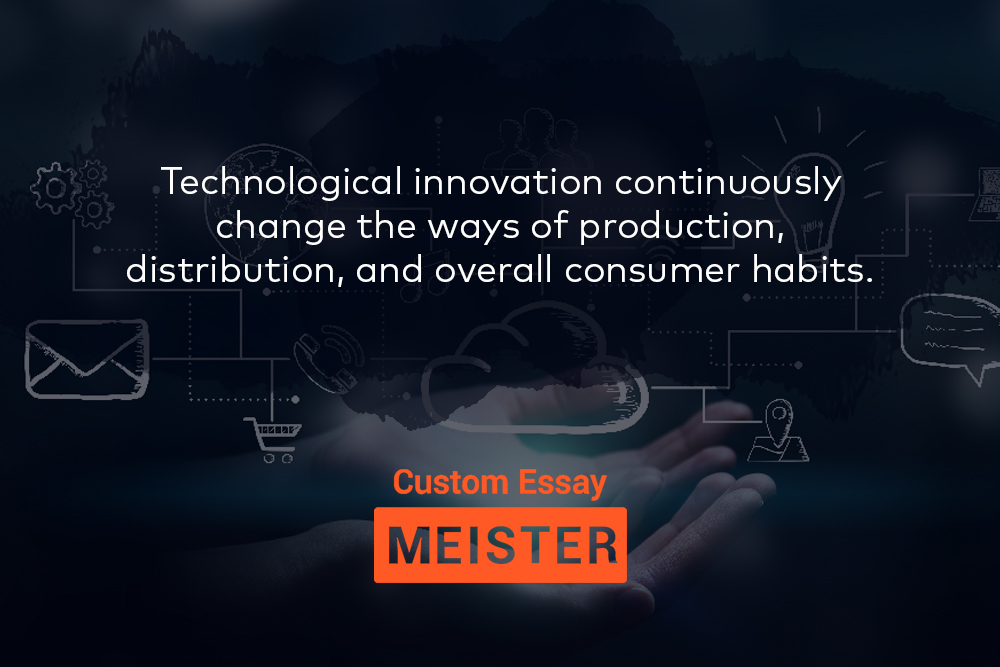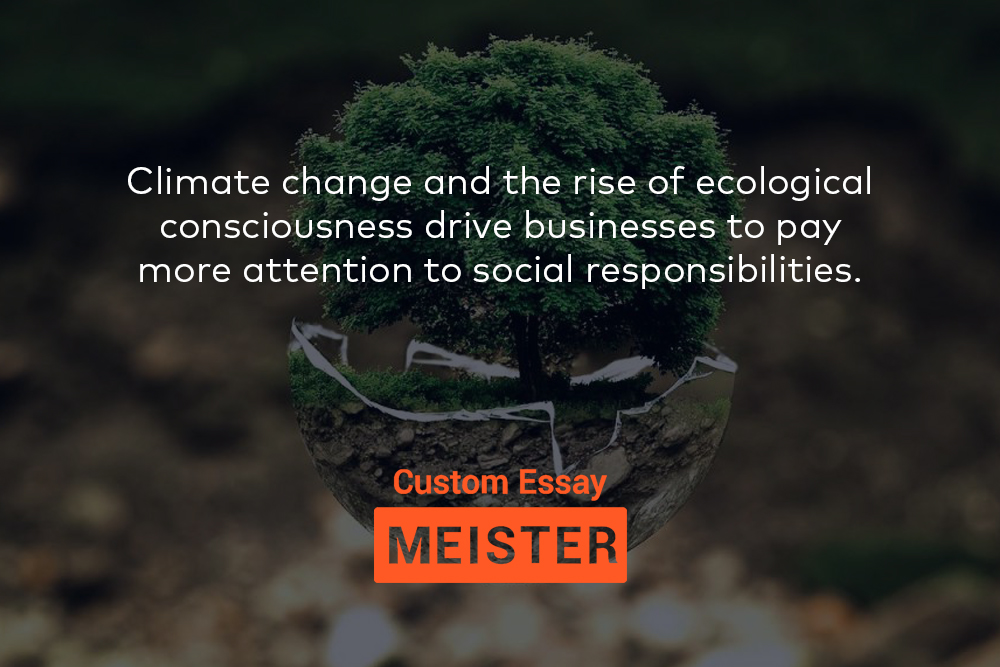What is PESTLE Analysis and How to Write One
Every organization is subject to internal and external forces that have the capacity to shape its fate. Recognizing these forces, analyzing their impacts, and developing an effective response to them is essential if an organization is to achieve success and longevity. It can be difficult to navigate through a maze of factors. Fortunately, there are useful tools that a company can utilize, one of which is the PESTLE analysis.
What is PESTLE Analysis?
PESTLE analysis is one of the most commonly used tools in business analysis. It is intended to analyze the business environment by looking at various factors that may affect the organization, its operations, or its products and services. PESTLE stands for Political, Economic, Social, Technological, Legal, and Environmental. All these are dimensions of the environment in which a company or business operates.
PESTLE analysis can be considered as similar to the analysis of external factors under SWOT analysis, but it is utilized for a more comprehensive, in-depth, and organized survey by looking at the six distinct dimensions. Hence, if you already know how to conduct a SWOT analysis , then you already have some knowledge of conducting a PESTLE analysis. Note that PESTLE analysis is distinct from other analytical tools and models like the marketing mix, business model canvas, or Porter’s Five Forces.
PESTLE analysis can be performed for a variety of reasons, such as when a company seeks to launch its products or services in a new market, conduct market segmentation , or establish operations in a foreign country. In order to know how to conduct PESTLE analysis, it is important to be familiar with the scope of each dimension.

Political
Political factors refer to the extent to which a government and its actions can affect the business or the industry. Governments often assume the responsibility of regulating or overseeing industries, and thus policies can affect an organization in various ways. For instance, policies on taxation, tariffs, labor, and trade restrictions can impact an organization’s performance.
But more than just its policies, a government’s character and stability also have an effect on a company. For example, massive corruption, political instability, and a weak government are typically not conducive for business operations. Policies a government also implements can attract or drive away investors. When analyzing political factors, some questions that you may ask are:
- What is the current political situation? Is it stable or is it unstable?
- Does the government uphold the rule of law? Is there corruption?
- Are there any possible dramatic shifts in the government in the foreseeable future?
- What is the government’s attitude towards foreign businesses and investors?
- Are there current or pending laws that will significantly affect the industry?
Economic
Economic factors refer to the features of the economic performance of a country that impact an organization. In general, excellent economic performance often means good prospects for a company, whereas economic downturns can be detrimental to an organization. But this is not always the case. Even countries that are not as economically advanced as others can offer certain advantages.
Some factors to consider are economic growth rate, exchange rates, interest rates, rate of inflation, unemployment rates, and the economic profile of the population including disposable incomes. For example, the purchasing power of consumers will certainly have an effect on the profitability of a company. Some questions to ask when analyzing economic factors are:
- Is the economy stable or unstable? Is it growing or shrinking?
- Are exchange rates constant or are there considerable fluctuations?
- What is the country’s employment rate? How do wages compare to other places?
- What is the level of disposable income?
- How is the economic performance in the past years?
Social
Social factors refer to the demographic characteristics as well as cultural beliefs and practices of the population. For instance, demographics include age distribution, income distribution, health profile, and population growth rate. Meanwhile, cultural beliefs and practices include values, norms, customs, religion, cultural identity, and even lifestyle trends.
Social factors can have a significant impact on businesses. For example, a young, college-educated , and skilled population can be advantageous for a company looking for a dynamic and talented workforce. Meanwhile, a country with a high percentage of wealthy citizens can be an excellent market for luxury goods. Some questions to consider when analyzing social factors include:
- What are the growth rate and age distribution of the population?
- What is the population’s level of health and education?
- What are social beliefs and practices that can affect your business?
- How will the population’s lifestyle affect your products and services?
- What are your target market’s attitudes and perceptions toward your product and services?
Technological
Technological factors are changes and innovations in technology that may impact your business. Technology undergoes constant transformation, and such shifts may be advantageous or detrimental to your organization. These factors include research and development, the emergence of new technologies , and technological awareness of the market. When analyzing technological factors, consider the following questions:

- Are there new technologies that you can use to improve your operations?
- Are there new technologies that you can use to enhance communication with your market?
- Are there new methods for producing and delivering products and services?
- How can you better leverage research and development to gain advantages?
- What technologies are you using that are becoming obsolete?
Legal
While this dimension sometimes overlaps with the political dimension, legal factors focus more on laws and legislation affecting your business and industry. Some of the factors that fall under this dimension are safety standards, consumer rights, advertising standards, labor laws, and regulatory policies. For example, advertising standards can affect how you market your products and services. Some questions to consider when conducting legal analysis:
- What laws, legislation, or regulations apply to your organization?
- Are you complying with these laws and policies?
- Do these help or hinder your operations?
- Are there any pending laws or legislation that can significantly alter the way you conduct business?
- Do you have a good understanding of laws, legislation, or regulations if you are conducting business in a foreign market?
Environmental
The environmental dimension involves factors that relate to geography, climate, and natural resources. Environmental factors have become more crucial over the past few decades as businesses became more keenly aware of the impact operations and consumption have on the planet. In particular, the rise of climate change, concerns over the future of the greenhouse effect , and the emergence of a more ecologically conscious society have driven businesses to integrate this dimension.

Many companies today practice corporate social responsibility in response to consumers’ demands for social and environmental accountability. Furthermore, consumers today especially the younger generations are more likely to patronize businesses that integrate practices that help save the environment. Some questions to consider when conducting environmental analysis:
- How does the geographical location affect your business?
- Are there climate conditions that can adversely impact your operations?
- Are there environmental laws that regulate your ecological footprint?
- Are your organization’s practices ethical and sustainable?
- What are your target market’s attitudes and perceptions towards ethical and sustainable production/consumption?
When to Use PESTLE Analysis
Because of its wide scope and in-depth focus on the six dimensions of the external environment, PESTLE analysis can be utilized by different types of industries and applied to a wide range of activities. This tool is especially useful when a company seeks to expand market penetration and or operations in foreign countries. Some of the situations where PESTLE analysis best applies include the following:
- Analyzing the current environment . Conducting PESTLE analysis is an excellent way to assess an organization’s status in relation to the current environment. The external environment is dynamic and constantly shifting. This means that forces can be favorable one moment but detrimental the next. As such, performing this analysis in a timely manner will help an organization determine its general health in light of prevailing trends in the environment.
- Launching products and services in foreign markets . Penetrating a foreign market poses inherent risks. After all, not all markets share the need for the same products and services. Conducting PESTLE analysis, therefore, allows organizations to determine if introducing new products and services will succeed or fail in a foreign market.
- Establishing operations in foreign countries . Moving operations to foreign countries is a prominent trend in the globalized world. But before moving operations, an organization needs to find out if the host country’s conditions are favorable. For instance, a country that has poor telecommunications infrastructure is a poor choice for an organization whose operations rely on this technology.
These are just a few of the situations where PESTLE analysis applies best. What makes this tool advantageous is that it can be used by almost every organization, from small non-profits to large multinationals. Nevertheless, this tool is most often used by companies that have a presence in various markets and deal with products and services.
Advantages and Limitations of PESTLE Analysis
Advantages
PESTLE analysis presents a number of advantages over other analytical tools. It is important to note that this tool serves a different purpose compared to others, so comparing it to others can get a little tricky. But there are other tools that are similar to some degree. So, what makes this tool advantageous? Here are some of the great things about PESTLE analysis:
- Simple . The main advantage of this tool is that it is simple and therefore easy to use. This tool categorizes data into six dimensions and thus provides a convenient framework when analyzing the external environment. It does not involve overly complicated processes, which makes it scalable. Any organization of any size, industry, and nature can use this tool.
- Comprehensive . Another advantage of PESTLE analysis is that it is comprehensive. Compared to SWOT analysis, this tool goes beyond detecting simple threats and opportunities; instead, it organizes data according to dimensions, thus giving an organization a bigger and more coherent picture.
- Encourages strategizing . This tool is also excellent because it encourages strategizing. Many organizations decline on account of failing to respond to environmental factors. As PESTLE analysis is all about knowing the external environment, it prompts an organization to be proactive rather than merely reactive.
Limitations
Though this tool has its advantages, it also has limitations. While PESTLE analysis is great for assessing an organization’s status in relation to the conditions that affect its trajectory, it is important to know its limitations and drawbacks in order to use it appropriately. Some of this tool’s drawbacks include the following:
- Limited to the external environment . The main disadvantage of PESTLE analysis is its focus on the external environment. This tool looks into how outside forces affect an organization, but not in the internal factors that also affect performance. Hence, it is important to use other tools that focus on internal factors such as SWOT analysis.
- Too much data can lead to paralysis . As PESTLE analysis is very comprehensive, organizations conducting it can expect to unearth massive amounts of data. But processing too much data may prevent an organization from moving forward and making decisions. This situation is known as analysis paralysis.
- Resource-intensive . As noted earlier, the external environment is ever-changing, thus requiring organizations to conduct PESTLE analysis repeatedly in response to shifts in the situation. Performing this analysis at regular intervals requires a lot of resources including time, talent, and financial input.
Although PESTLE analysis is a great way to determine the status of an organization and come up with strategies, it is not a perfect tool. Its advantages include simplicity, comprehensiveness, and proactivity. On the other hand, it only deals with the external environment, carries the risk of analysis paralysis, and requires a lot of resources. This tool can be optimized by using it in conjunction with other tools.
Find a sample of PESTLE Analysis here.
Custom PESTLE Analysis Paper and Other Business Papers
While PESTLE analysis is most commonly conducted by companies, it is never too early to learn how to do it. In fact, using this tool begins in school. Students who major in business, management, and finance as well as students taking master’s in business administration (MBA) regularly encounter this project. But in this hectic world, most students have trouble completing this project on their own, hence the need for firms like CustomEssayMeister.
As a top custom writing firm, CustomEssayMeister has hundreds of expert writers who can provide you with solid business papers including PESTLE analysis. But more than that, our writers also specialize in other analytical tools like SWOT analysis, Porter’s Five Forces, BCG analysis, and marketing mix. Get the best value for your money by ordering your business papers at CustomEssayMeister. Just let us know what you want and we'll give you the help you need.